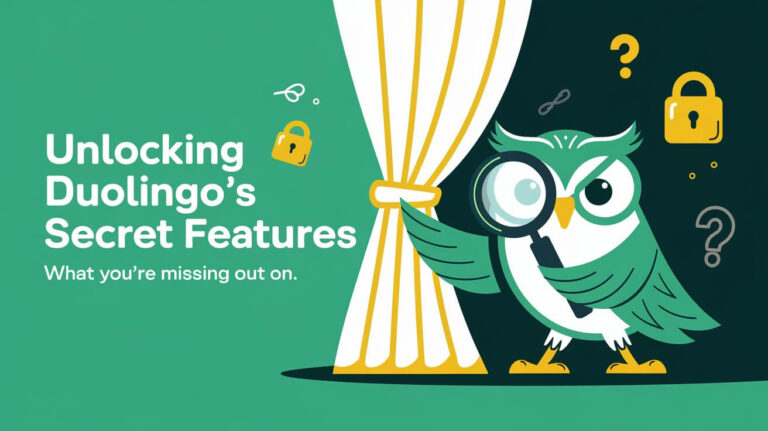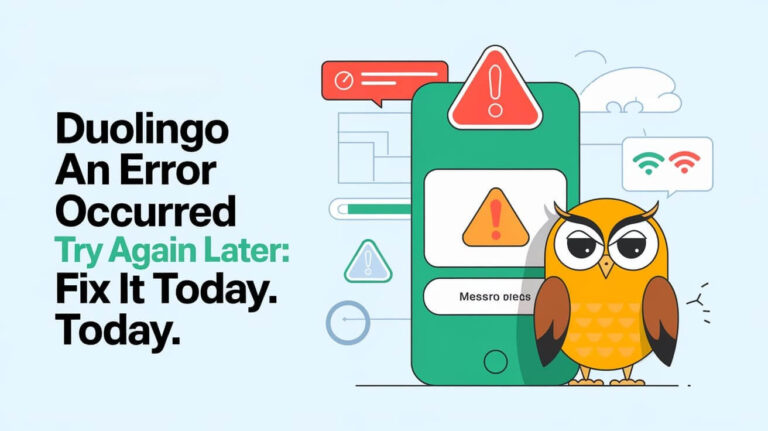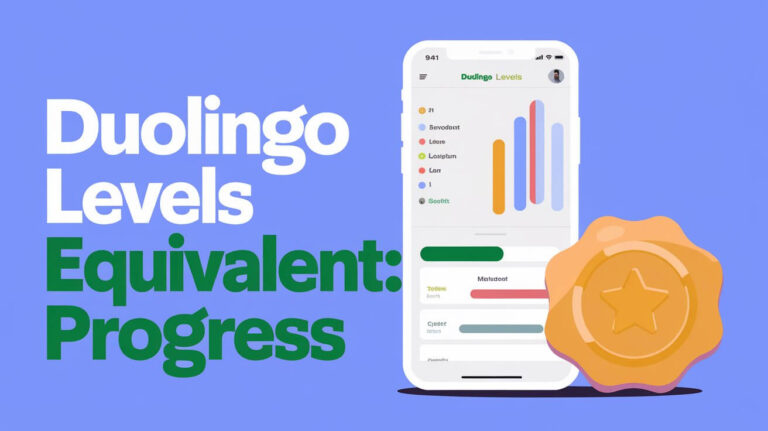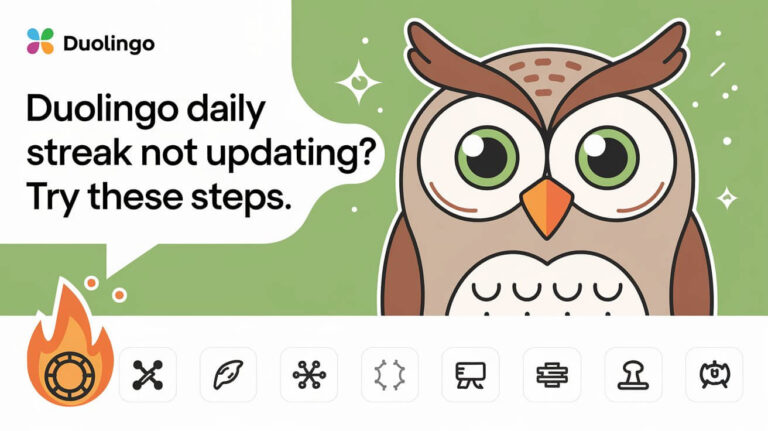Learning a new language can be an incredibly rewarding experience, opening doors to new cultures, people, and perspectives. However, many struggle to find an effective and convenient way to learn a language. This is where apps like Duolingo come into play, promising to make language learning fun, accessible, and free.
But the big question remains: does Duolingo work for learning languages? This guide explores Duolingo’s approach and effectiveness, offering tips to maximize the app’s potential.
What is Duolingo?
Duolingo is a language learning app that uses gamification and bite-sized lessons to make the process of learning a new language feel more like playing a game than studying. The app is free to download and use, with an optional paid subscription (“Duolingo Plus”) that removes ads and provides additional features.
At its core, Duolingo teaches languages through a series of short lessons that cover reading, writing, listening, and speaking skills. Each lesson introduces new vocabulary and grammar concepts through interactive exercises and repetition.
How Duolingo’s Lessons Work
Duolingo’s lessons are structured around a specific skill or topic, such as “Colors” or “Present Tense Verbs.” Within each lesson, you’ll encounter a variety of exercise types, including:
- Translation exercises: Translate sentences from your native language to the language you’re learning, and vice versa.
- Multiple choice questions: Select the correct word or phrase to complete a sentence.
- Speaking practice: Record yourself saying words or phrases out loud, and have your pronunciation evaluated by Duolingo’s speech recognition technology.
- Listening comprehension: Listen to audio clips and choose the correct written translation or answer questions about what you heard.
One of Duolingo’s core principles is the use of repetition and spaced repetition to help reinforce what you’ve learned. As you progress through a lesson, you’ll encounter variations of the same vocabulary words and grammar concepts multiple times, to cement that knowledge through repeated exposure.
Does Duolingo Alone Lead to Fluency?
The concept of “fluency” is somewhat vague and difficult to define, as it can mean different things to different people. Instead of focusing on fluency, it’s more useful to evaluate Duolingo’s effectiveness in helping learners develop specific language skills.
Research has shown that learners who complete Duolingo’s beginner content in languages like Spanish and French can achieve reading and listening comprehension levels comparable to those of students who have taken several university semesters of those languages. However, it’s important to note that these studies evaluated learners’ receptive skills (understanding written and spoken language), not their productive skills (speaking and writing).
When it comes to speaking abilities, Duolingo’s effectiveness is more limited. While the app does provide opportunities for speaking practice, the exercises are generally focused on repeating individual words or short phrases, rather than engaging in open-ended conversations.
This isn’t necessarily a shortcoming of Duolingo, as developing strong speaking skills typically requires additional practice beyond what a language-learning app can provide. To truly become a confident and fluent speaker, it’s recommended to supplement Duolingo with other resources like conversation practice, language exchange partners, or a tutor.
Pros and Cons of Learning With Duolingo
Like any language learning method, Duolingo has its advantages and drawbacks. Here are some of the key pros and cons to consider:
Pros:
- Free and accessible: Duolingo’s core app is completely free to use, making language learning accessible to anyone with a smartphone or internet connection.
- Gamified and engaging: The gamification elements, such as earning points, maintaining streaks, and leveling up, can make language learning feel more like a game than a chore.
- Bite-sized lessons: Lessons are short and digestible, making it easy to fit language practice into your daily routine.
- The breadth of languages: Duolingo offers courses in over 40 different languages, including many less commonly taught languages.
Cons:
- Limited speaking practice: While Duolingo does offer some speaking exercises, the opportunities for open-ended conversation practice are limited.
- Need for supplemental resources: To truly become proficient in a language, you’ll likely need to supplement Duolingo with other resources like textbooks, tutors, or language exchange partners.
- “Weird” sentences: Some of the sentences used in Duolingo’s exercises can feel a bit contrived or out of context, which can be frustrating or confusing for learners.
How Effective is Duolingo Compared to Other Methods?
Duolingo is often compared to other language learning methods, such as classroom courses, immersion programs, and paid apps or tutoring services. Here’s a brief comparison:
Duolingo vs. Classroom Courses:
- Classroom courses typically provide a more structured and comprehensive curriculum, with opportunities for direct feedback from an instructor.
- However, Duolingo is more convenient, accessible, and affordable (or free).
Duolingo vs. Immersion:
- Immersion (living in a country where the language is spoken) is widely considered the most effective way to learn a language, as it forces you to use the language in real-world situations.
- Duolingo can help build a foundation, but it’s no substitute for the immersive experience of being surrounded by a language.
Duolingo vs. Paid Apps/Tutoring:
- Paid language learning apps and tutoring services can provide a more personalized and comprehensive learning experience, but they also come with a higher cost.
- Duolingo is an excellent free or low-cost alternative, especially for those just starting their language learning journey.
Duolingo works best as a supplemental tool, used with other resources, not as a standalone language learning solution.
Who is Duolingo Best Suited For?
Duolingo is especially helpful for certain groups of language learners:
- Beginners: Duolingo’s gamified approach and bite-sized lessons make it an excellent way to get started with a new language and build a solid foundation.
- Casual learners: If you’re learning a language for fun, travel, or personal enrichment (rather than academic or professional purposes), Duolingo’s casual and engaging format can be a great fit.
- Mobile learners: With Duolingo’s mobile app, you can fit language practice into your daily routine, no matter where you are.
Advanced learners or those with specific goals may need more than Duolingo; they’ll need additional resources.
Success Stories and Testimonials from Duolingo Users
Many Duolingo users have successfully learned languages using the app; here’s what some of them say:
“I’ve been using Duolingo for about a year to learn Spanish, and I’m amazed at how much I’ve learned. I can now understand basic conversations, read simple texts, and even hold brief conversations with my Spanish-speaking coworkers.” – Sarah, United States
“Duolingo has been a game-changer for me. I’ve always wanted to learn a language, but traditional classes felt too intimidating. With Duolingo, I can practice at my own pace and fit it into my daily routine.” – Mark, Canada
“I used Duolingo to brush up on my high school French before a trip to Paris. While I wasn’t fluent by any means, it gave me enough confidence to navigate the city and have basic conversations with locals.” – Emily, United Kingdom
These stories highlight the various ways Duolingo can be an effective language learning tool, whether you’re starting from scratch or just need a refresher.
Tips for Getting the Most Out of Duolingo
If you decide to use Duolingo as part of your language-learning journey, here are some tips to help you get the most out of the app:
- Create a consistent study routine: Consistency is key when it comes to language learning. Try to set aside a specific time each day for Duolingo practice, even if it’s just 15-20 minutes.
- Set achievable goals: Don’t expect to become fluent overnight. Set realistic goals based on your level and the time you can commit to studying.
- Combine Duolingo with other resources: Supplement your Duolingo practice with language learning books, movies, or TV shows in your target language, conversation practice with native speakers, or a tutor.
- Practice speaking out loud: While Duolingo does offer some speaking exercises, make an effort to practice speaking out loud as much as possible to improve your pronunciation and fluency. Shadowing audio clips or having conversations with yourself can help build confidence and muscle memory.
- Use the app’s features: Take advantage of Duolingo’s various features like Stories, Podcasts, and Events to supplement your learning. Stories provide listening and reading practice through conversational dialogues, while the Podcasts expose you to real-world speech at an intermediate level. Events can connect you with other learners for language exchanges or meetups.
- Follow the tips within the app: Duolingo provides useful tips and explanations throughout the lessons. Don’t just blindly click through – take the time to read and understand these insights, as they can help cement your knowledge of grammar rules and language nuances.
- Stay motivated with streaks and rewards: While not the primary goal, Duolingo’s gamification elements like streaks and level progression can be surprisingly motivating. Embrace these features to stay engaged and consistent with your language practice.
What Languages Can You Learn on Duolingo?
One of Duolingo’s strengths is the breadth of languages it offers courses for. As of 2024, you can learn over 40+ different languages on the app, including:
- Spanish, French, German, Italian, Portuguese, Russian
- Japanese, Chinese, Korean, Arabic, Hindi, Greek
- Irish, Welsh, Hawaiian, Navajo, and many more
The app consistently expands its language offerings based on demand and the availability of qualified course contributors. So if your target language isn’t on the list yet, be sure to check back regularly.
Key Takeaways on Duolingo’s Effectiveness
To summarize, Duolingo can be an effective tool for learning languages, but it’s important to understand its strengths and limitations:
✅ Duolingo is excellent for building a foundation in vocabulary, grammar, reading, and listening comprehension.
✅ The gamified, bite-sized approach makes it easy to establish a consistent language learning habit.
✅ Duolingo is free, and accessible, and offers courses in a wide range of languages.
❌ Duolingo alone is not sufficient for developing strong speaking and conversation skills.
❌ While engaging, the exercises can sometimes feel contrived or out of context.
❌ To reach higher proficiency levels, you’ll need to supplement Duolingo with additional resources.
Duolingo works best when used with other resources, immersion, and conversation practice.
Conclusion
In conclusion, Duolingo can be an effective tool for learning languages, particularly for beginners or casual learners looking to build a foundation. Its gamified approach, bite-sized lessons, and breadth of language offerings make it accessible and engaging.
Duolingo alone won’t lead to complete fluency; you need additional resources, conversation practice, and immersion.
By using Duolingo as part of a well-rounded language learning strategy, you can leverage its strengths while compensating for its limitations. With consistency, dedication, and a willingness to seek out diverse learning resources, Duolingo can be a valuable part of your journey toward language proficiency.
The key is to approach Duolingo with realistic expectations and a commitment to putting in the work required to truly learn a new language. With the right mindset and complementary resources, Duolingo can work – it’s up to you to make the most of it.







